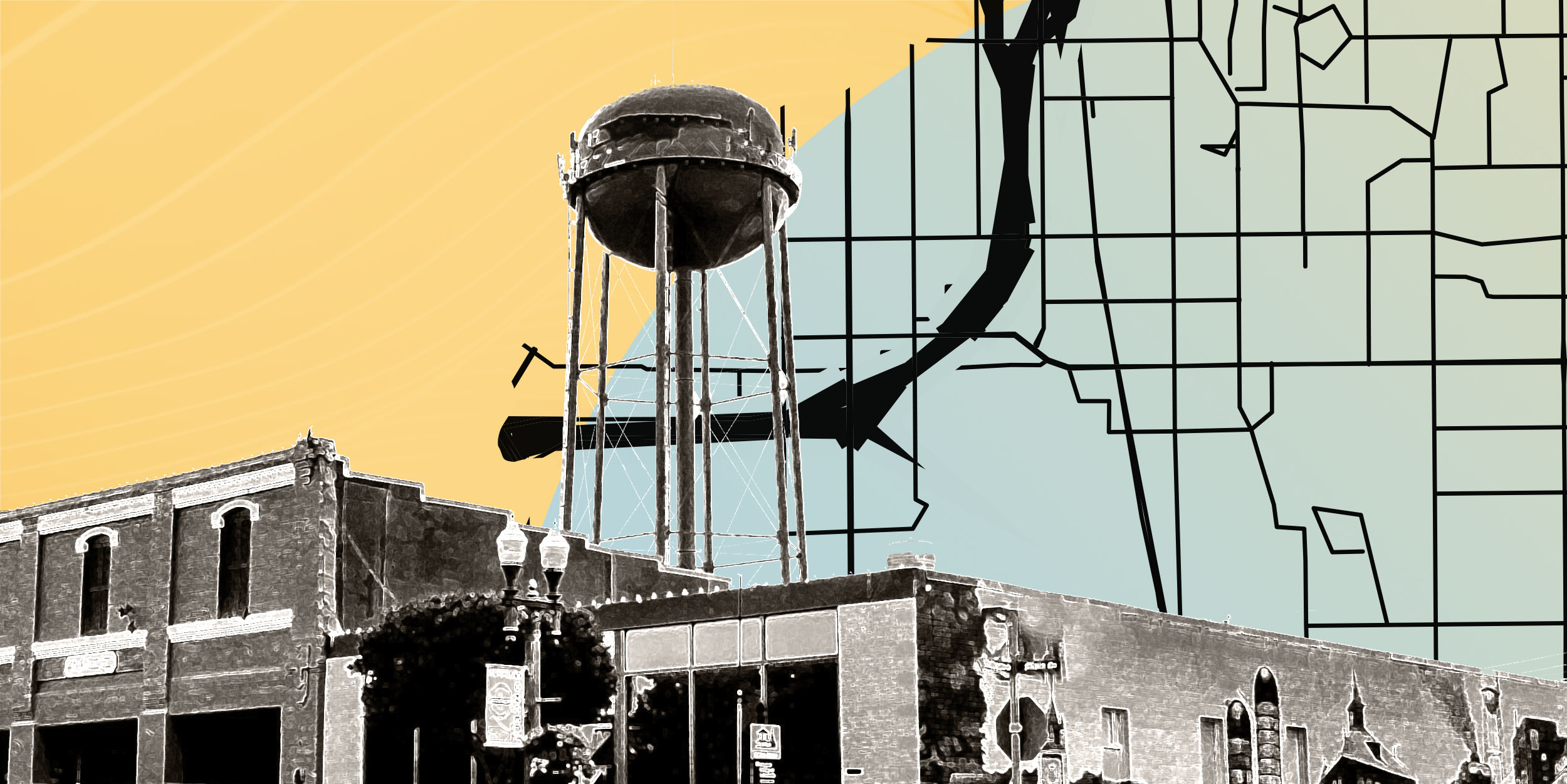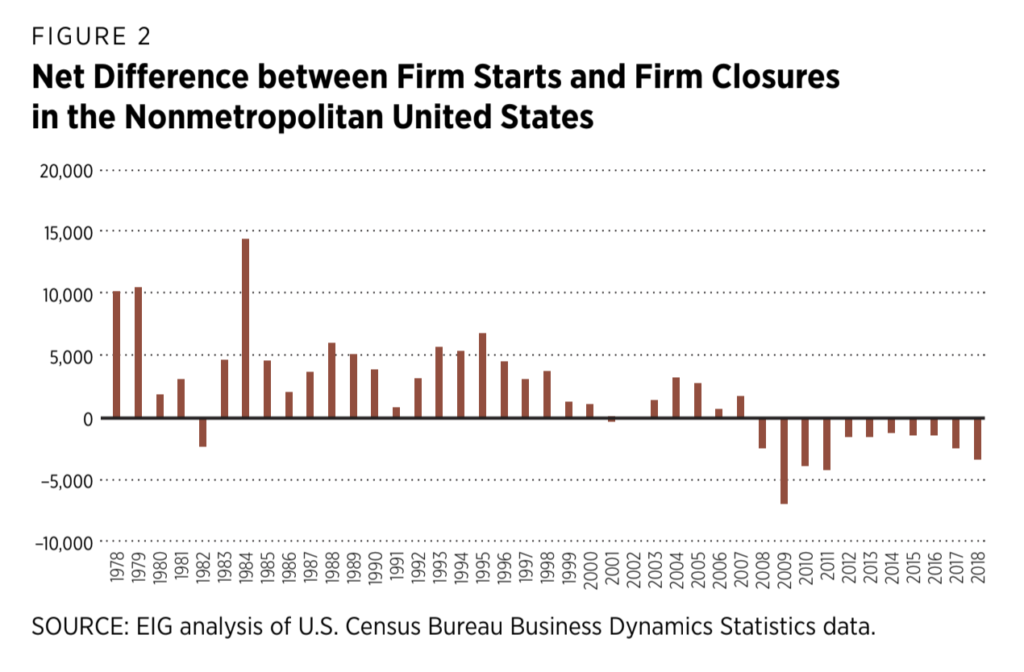by Kenan Fikri
This excerpt was originally published in Investing in Rural Prosperity, co-published by the St. Louis Fed and Federal Reserve Board of Governors on November 16th, 2021. Download the complete chapter and full publication.
The Entrepreneurship That Defines the Rural Way of Life Looks Increasingly Imperiled
Entrepreneurs help economies evolve—globally, nationally and locally. They combine the factors of production—land, labor, capital and technology—in new and innovative ways. The future of the rural economy will come from within rural America itself, and entrepreneurs will shepherd it in. Yet rural entrepreneurship is declining, arguably just when it is needed most. According to EIG’s analysis of U.S. Census Bureau Business Dynamics Statistics data, rural America (defined in this section as nonmetropolitan areas) produced its smallest crop of startups ever in 2018, just shy of 18,0001 —that’s 44% below its 1995 peak. It also falls well short of offsetting the 21,300 rural firms that closed in 2018.
And this imbalance did not occur only in 2018. In fact, every year since 2008, more firms have wound down across rural America than have started. This is a new development historically, and as a result, the total number of firms in the rural United States has fallen by 10.5% since just before the Great Recession. There are fewer rural firms active in the United States today than at any time since 1987.
Fading entrepreneurship is not a phenomenon unique to rural America. Startup rates have been falling nationally for several decades, accelerating modestly at the start of the 21st century and then swiftly with the 2008 financial crisis. However, the fall has been steeper for rural areas and pushed them below the critical “replacement rate” threshold that would have at least one new company forming for every one that folded. We see the same accelerated downward trend with respect to rural self-employment rates, although for the time being, rural areas still beat out metropolitan areas on this more individualized measure of entrepreneurship.2
The drying startup pipeline is making itself felt across rural labor markets, especially when combined with the broader trend toward increased corporate concentration across the economy (in which a smaller number of firms have come to dominate larger shares of their respective markets).
To continue reading, download the complete chapter or the full publication.
Notes
1 The geographic definitions in this time series are standardized to 2018, so the figures are not biased by the shrinking portion of the country that is considered nonmetropolitan.
2 Wilmoth, Daniel. “The Retreat of the Rural Entrepreneur.” U.S. Small Business Administration, Office of Advocacy, Economic Research Series, Sept. 29, 2017. See cdn.advocacy.sba.gov/wp-content/uploads/2018/11/30141854/TIE-2017-09-29-Retreat-Rural-Entrepreneur.pdf.







